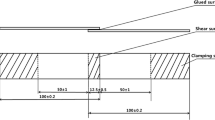Abstract
Melamine-formaldehyde (MF) resins have been used as crosslinkers for hydroxyl-functional coreactants in thermoset coatings for about 60 years. Crosslink densities of films prepared from oligomeric urethane polyols suggested that the methoxymethyl groups of MF resins could react with urethane groups (i.e., secondary carbamate groups) as well as reacting with hydroxyl groups. Co-reactants that contain secondary carbamate groups and no hydroxyl groups have been prepared with several types of backbone structures. Cure of such co-reactants by MF resins has been studied using a gradient oven with determination of impact resistance, solvent resistance, and hardness. Several formulations from these cure profile sets have been selected for crosslink density determinations by dynamic mechanical analysis (DMA). Crosslink densities of cured films are consistent with complete conversion of secondary carbamate groups at temperatures only slightly higher than those used for cure of hydroxyl groups. The -OH groups on certain acrylic polyols were converted to secondary carbamate groups. The original acrylic and the converted acrylic were both cured with MF resins. Acid resistance was much better for films prepared from the acrylic that contained secondary carbamate groups.
Similar content being viewed by others
References
Wicks, Z.W., Jr., Jones, F.N., and Pappas, S.P.,Organic Coatings Science and Technology, Vol. 1, Wiley-Interscience, New York, p. 83, 1992.
Santer, J.O., “Etherified Amino Resins: Synthesis and Reactions in Surface Coatings Applications,”Prog. Org. Coat., 12, 309 (1984).
Blank, W.J., “Melamine Formaldehyde Networks with Improved Chemical Resistance,”Proc. ACS PMSE, 77, 391 (1997).
Gregorovich, B.V. and Hazan, I., “Environmental Etch Performance, and Scratch and Mar of Automotive Clearcoats,”Prog. Org. Coat., 24, 131 (1994).
Gardon, J.L., “Polyurethane Polyols: Ester-bond Free Resins for High Solids Coatings,”Journal of Coatings Technology,65, No. 819, 25 (1993).
Walker, F.H. and Gardon, J.L. (to Akzo Nobel Coatings, Inc.), U.S. Patent 5,130,405 (July 14, 1992).
Yahkind, A.L., Wagstaff, I., and Walker, F.H., “Polyurethane Polyols and Coatings Thereof Having Reduced Viscosity,” Patent Application by Akzo Nobel N.V., WO 96/40813 (1996).
Rehfuss, J.W. and St. Aubin, D.L. (to BASF Corp.), U.S. Patent 5,356,669 (October 18, 1994).
Swarup, S., McCollum, G.J., Singer, D.L., Olson, K.G., Stefko, S.T., and Mayo, M.A., Internat. Appl. No. PCT/US93/10172 (WO 94/10211) (PPG Industries,) (Oct. 25, 1993).
Ojunga-Andrew, M., Higginbottom, H.P. and Hill, L.W., “High Solids Coatings Based on a Novel Triisocyanate,”Proc. 22nd Waterborne, High-Solids, & Powder Coatings Symp., New Orleans, LA, 200, 1995.
Higginbottom, H.P., Bowers, R. G., Hill, L.W., and Courtier, J.F., “Coating Systems Based on Tricarbamate Crosslinkers Derived from Triaminononane,”Proc. 23rd Internat. Conf. on Organic Coat. Sci. and Technol., Athens, Greece, July 7–11, 1997.
Hill, L.W., “Dynamic Mechanical and Tensile Properties,” inPaint and Coatings Testing Manual, Ch. 46, pp. 534–546, Koleske, J.V., (Ed.), Fourteenth Edition of Gardner-Sward Handbook, ASTM, Philadelphia, PA, 1995.
Personal communication, Solutia Inc.; Wilson, R.C., Krejsa, M.R., Higginbottom, H.P., and Hill, L.W.
Chu, G. and Jones, F.N., “Low-Temperature Curing Higher-Solids Polyester Coatings with Melamine-Formaldehyde Resin Crosslinkers,”Journal of Coatings Technology,65, No. 819, 43 (1993).
Wicks, Z.W., Jr., Jones, F.N., and Pappas, S.P.,op. Cit.,, p. 89. 1992
Haseebuddin, S., Raju, K.V.S.N., and Yaseen, M., “Crosslink Density and Cure Window of Oligourethane Diol/Melamine High-Solids Coatings,”Journal of Coatings Technology,70, No. 879, 35 (1998).
Satguru, R., McMahon, J., Padget, J.C., and Coogan, R.G., “Aqueous Polyurethanes—Polymer Colloids with Unusual Colloidal, Morphological, and Application Characteristics,”Journal of Coatings Technology,66, No. 830, 47 (1994).
Rynders, R.M., Hegedus, C.R. and Gilicinski, A.G., “Characterization of Particle Coalescence in Waterborne Coatings Using Atomic Force Microscopy,”Journal of Coatings Technology,67, No. 845, 59 (1995).
Hegedus, C.R. and Kloiber, K.A., “Acrylic-Polyurethane Dispersions: Structure and Properties in Industrial Coatings,”Proc. 21st Waterborne, Higher Solids, & Powder Coating Symp., New Orleans, LA, 144, February 9–11, 1994.
Blank, W.J. and Tramontano, V.J., “Properties of Crosslinked Polyurethane Dispersions,”Prog. Org. Coat., 27, 1 (1996).
Author information
Authors and Affiliations
Additional information
730 Worcester Street, Springfield, MA 01151.
Rights and permissions
About this article
Cite this article
Higginbottom, H.P., Bowers, G.R., Ferrell, P.E. et al. Cure of secondary carbamate groups by melamine-formaldehyde resins. Journal of Coatings Technology 71, 49–60 (1999). https://doi.org/10.1007/BF02698371
Issue Date:
DOI: https://doi.org/10.1007/BF02698371




